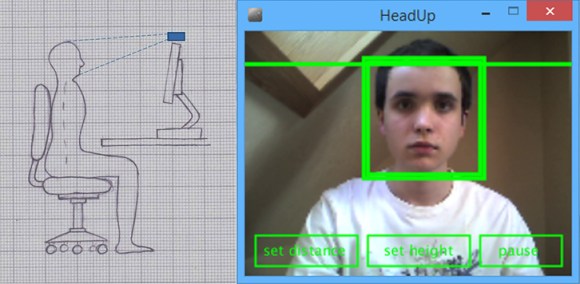
Even for hobby projects, iteration is very important. It allows us to improve upon and fine-tune our existing designs making them even better. [Max] wrote in to tell us about his latest posture sensor, this time, built around a webcam.
We covered [Max’s] first posture sensor back in February, which utilized an ultrasonic distance sensor to determine if you had correct posture (or not). Having spent time with this sensor and having received lots of feedback, he decided to scrap the idea of using an ultrasonic distance sensor altogether. It simply had too many issues: issues with mounting the sensor on different chairs, constantly hearing the clicking of the sensor, and more. After being inspired by a very similar blog post to his original that mounted the sensor on a computer monitor, [Max] was back to work. This time, rather than using an ultrasonic distance sensor, he decided to use a webcam. Armed with Processing and OpenCV, he greatly improved upon the first version of his posture sensor. All of his code is provided on his website, be sure to check it out and give it a whirl!
Iteration leads to many improvements and it is an integral part of both hacking and engineering. What projects have you redesigned or rebuild? Let us know!















IMHO keeping the same posture for a long time should always be considered a bad posture. If you change postures frequently even bad postures can become good, as if you average all the postures over time you should get no particular strain on any specific muscles…
That makes sense to me, but there are really bad postures though, so perhaps one can make something to detect the really bad ones and allow for a range of not-so-bad ones.
I’d never advise to use a camera though, not to something that is networked at least.
What if I don’t have a camera or cover it with a piece of tape (in a laptop)? Will it work too?
IS a laptop suppose to be used in a proper posture?
Sitting straight up is not good posture, and has been known for at least 8 years. Unless you enjoy lumbar pain, a more open trunk angle of 130-135 degrees is optimal. http://www2.rsna.org/timssnet/media/pressreleases/pr_target.cfm?ID=294
Aren’t you also supposed to position your monitor so it’s 10-20* below your eye line?
General guideline is top of screen 2-3″ below eye level. I never found that comfortable, particularly when leaning back. I generally set my monitors up to have about 20% of the screen above my eye level.
I’ve programmed something similar, with the Intel perceptual processing SDK: http://www.zipfelmaus.com/blog/intel-perceptual-challenge-app-sit-perfect/
Sitting straight may have its downsides, but it’s certainly better than hunching forward!
The paper says it’s preferable to be leaning back, like “semi-laid”, but not quite; 135 degrees to the thighs instead of 90 degrees, supposing you have a chair and not a bench.
But the problem starts far behind: SITTING itself is bad for you.